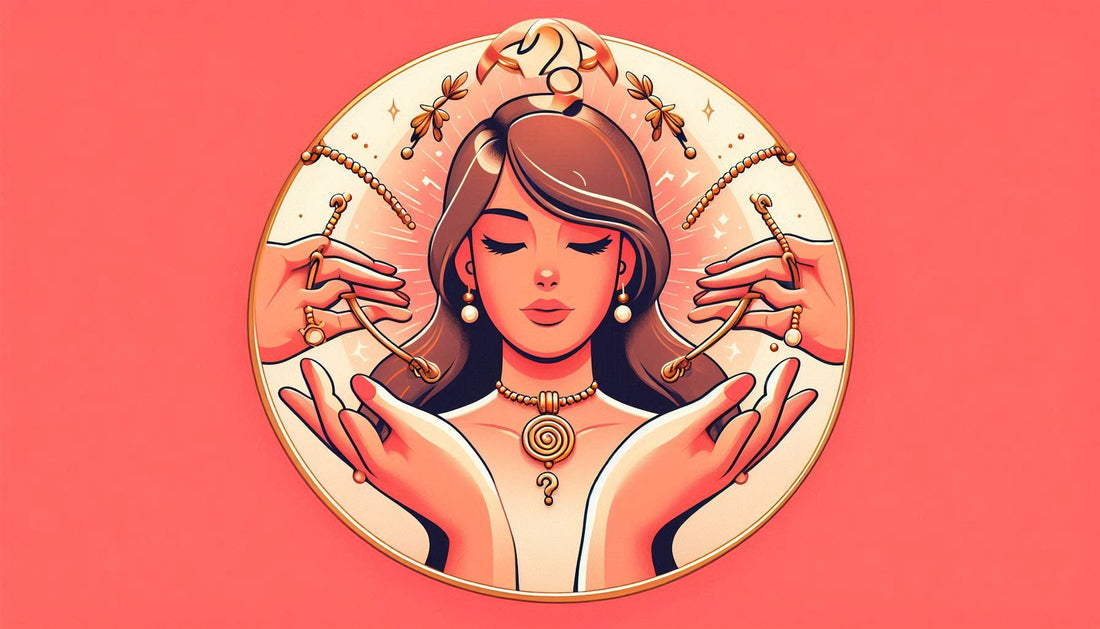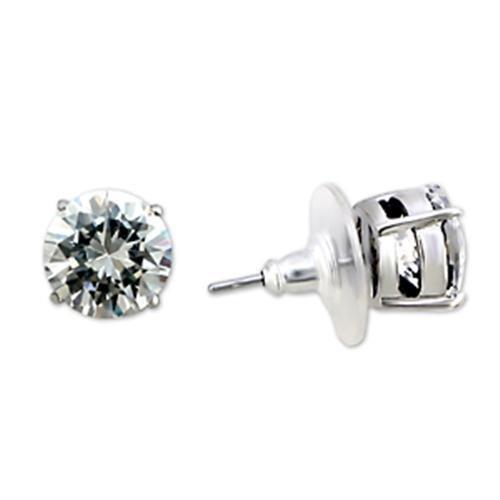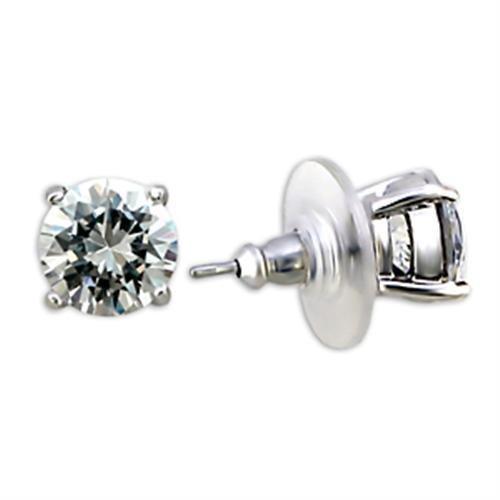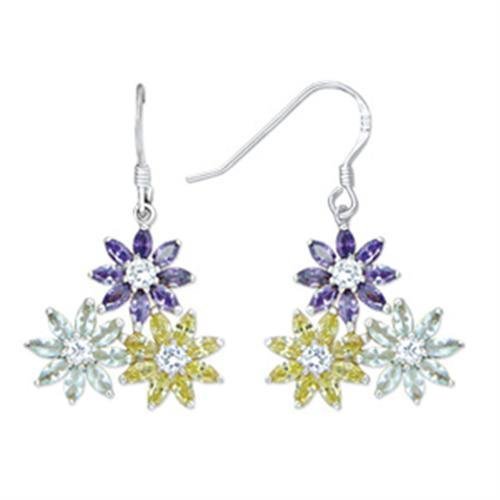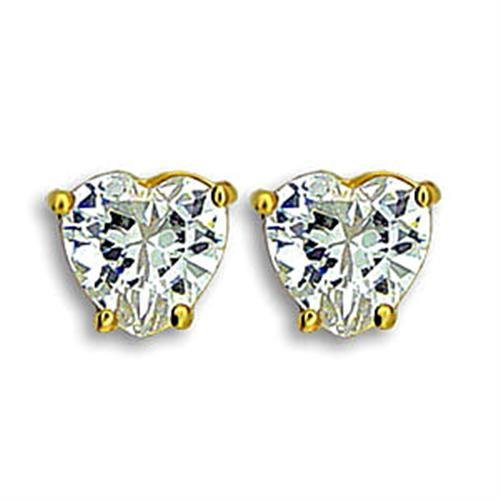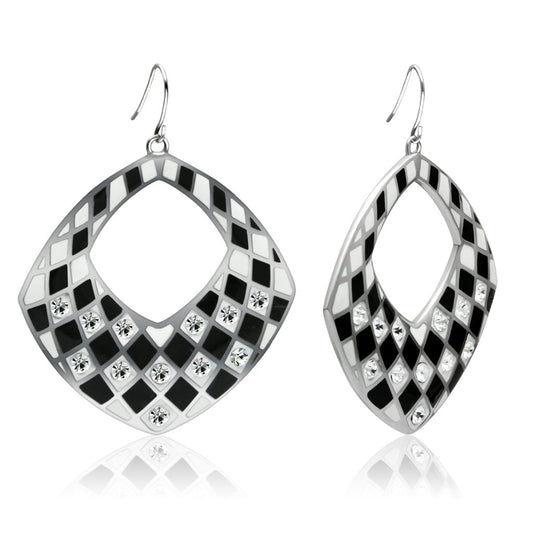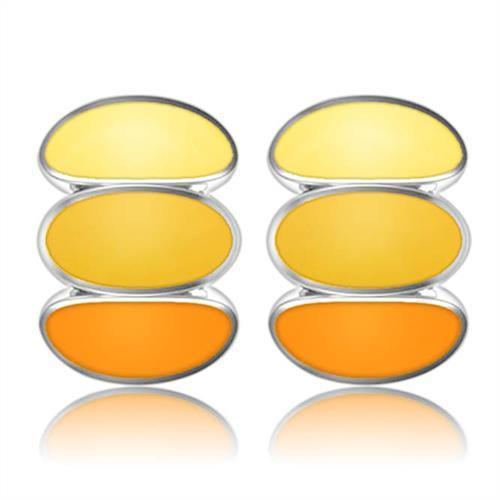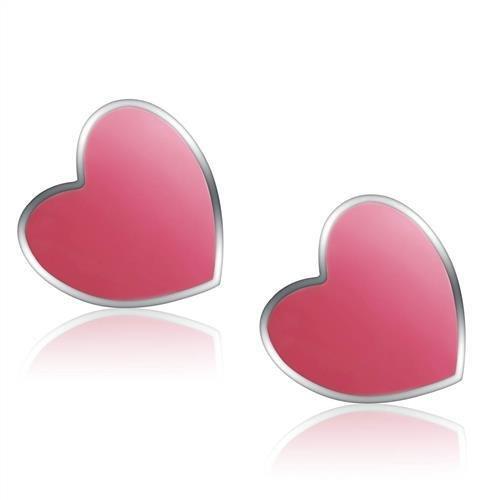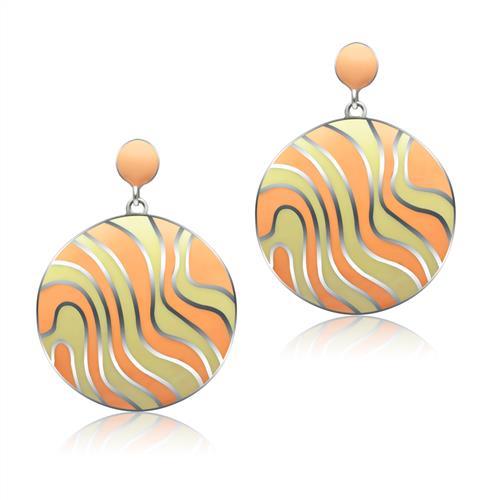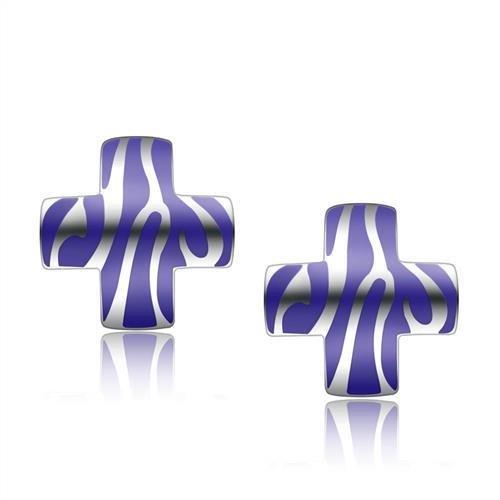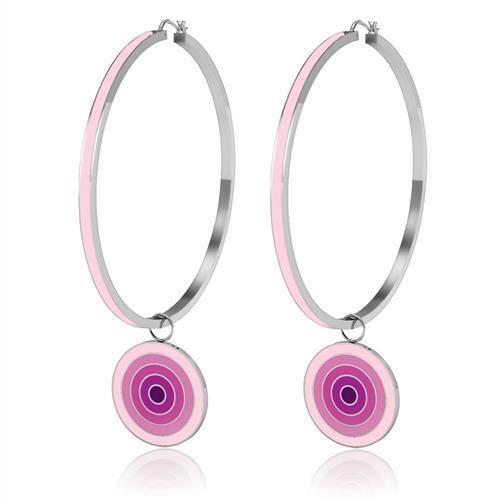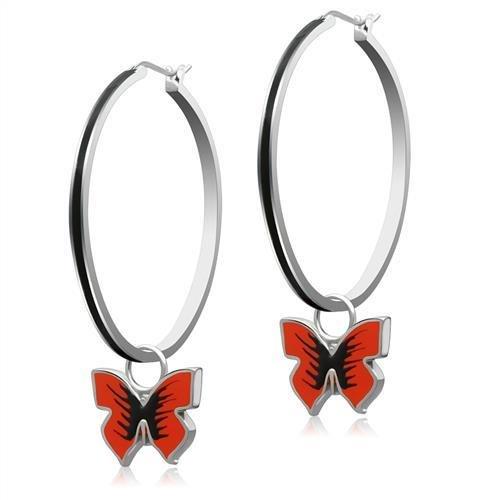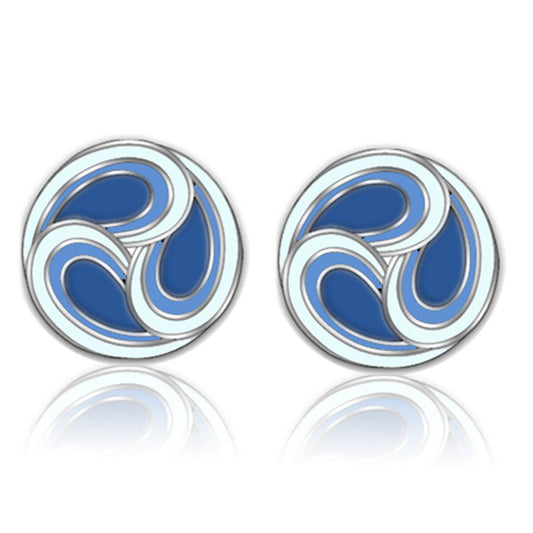Necklaces often turn around so the clasp is at the front due to factors such as the weight distribution of the pendant and clasp, the type of chain, and the movement of the wearer. This article explores the science behind necklace twisting, common issues faced by wearers, and practical solutions to keep your jewelry in place.
Table of Contents
- Understanding Necklace Clasp Movement
- Factors Influencing Necklace Movement
- Practical Solutions and Jewelry Hacks
- Jewelry Maintenance and Care
- Advanced Techniques for Necklace Stability
- Types of Necklaces and Their Unique Movement Issues
- DIY Solutions for Necklace Movement
- Superstitions and Cultural Beliefs
- Clothing Fit and Its Impact on Necklace Movement
- Jewelry Hacks for Everyday Wear
- Psychological Aspects of Necklace Positioning
- Expert Tips on Necklace Maintenance
- Selecting the Right Necklace for Different Occasions
- Innovative Necklace Solutions
- Jewelry Hacks for Sensitive Skin
- Conclusion
- FAQ
Understanding Necklace Clasp Movement
The frustration of having your necklace clasp constantly moving to the front is a common one. To tackle this issue, it's essential to understand the underlying causes:
- Clasp Weight vs. Pendant Weight: The relative weights of the clasp and the pendant play a significant role. If the clasp is heavier, it will naturally slide to the lowest point due to gravity.
- Necklace Twisting: The torque effect caused by uneven weight distribution can lead to twisting. As the necklace moves with your body, the clasp often migrates to the front.
- Chain Flipping and Bending: Chains with more bends and curves are more prone to flipping. This can cause the clasp to shift positions frequently.
Factors Influencing Necklace Movement
Several factors contribute to the movement of the clasp:
- Chain Length and Necklace Length: Longer necklaces are more likely to twist and turn, whereas shorter ones tend to stay in place better.
- Necklace Weight Distribution: Proper weight distribution between the pendant and the clasp is crucial for stability.
- Loose Clasp: A loose clasp can exacerbate movement issues. Ensuring a secure clasp can mitigate this problem.
Practical Solutions and Jewelry Hacks
Fortunately, there are several strategies to keep your necklace in place:
- Double-Clasping: Use two clasps to balance the weight distribution.
- Necklace Extender Chain: Adjust the length to find a balance that minimizes movement.
- Secure Clasp: Opt for a more secure clasp to prevent slipping.
- Chain Attachment: Attach a small metal loop or weight near the clasp to counterbalance the pendant weight.
Jewelry Maintenance and Care
Maintaining your jewelry properly can also help prevent unwanted movement:
- Jewelry Organizers: Store your necklaces in a way that prevents tangling and twisting. Explore our collection of jewelry organizers to keep your pieces in pristine condition.
- Regular Cleaning: Clean your necklaces regularly to ensure smooth movement and reduce friction.
- Clasp Tightening: Periodically check and tighten your clasps to maintain their hold.
Advanced Techniques for Necklace Stability
For those who experience persistent issues, more advanced techniques can be employed:
- Glue or Tape for Weight: Add a small, discreet weight to the clasp area using glue or tape to balance the necklace.
- Necklace Knotting: Tie a small knot near the clasp to add friction and prevent movement.
- Silk Scarf Friction Reduction: Wearing a silk scarf can reduce friction and help keep the necklace in place.
By understanding the factors that cause necklace movement and implementing these solutions, you can enjoy your jewelry without constantly adjusting it.
Discover our beautiful collection of necklaces to find the perfect piece that suits your style and stays in place.
Types of Necklaces and Their Unique Movement Issues
Different types of necklaces exhibit varying movement behaviors due to their unique designs and materials. Understanding these differences can help in selecting and maintaining jewelry that stays in place.
Diamond Tennis Necklace
A diamond tennis necklace is known for its elegance and sophistication. However, its uniform weight distribution and smooth surface can make it prone to sliding.
- Pendant Stability: Since tennis necklaces often lack a prominent pendant, they are less likely to stay centered.
- Clasp Position: Ensuring the clasp is tightly secured can minimize movement.
- Neckline Fit: Matching the necklace length with your neckline can reduce the likelihood of shifting.
Layered Necklaces
Layered necklaces are fashionable but can be tricky to manage due to their multiple strands.
- Chain Tension and Twisting: Each strand can move independently, causing tangling and twisting.
- Necklace Counterweight: Adding small counterweights to the clasps of each layer can help maintain balance.
- Chain Manipulation: Adjusting the length of each strand to avoid overlapping can prevent movement.
Heavier Pendants
Necklaces with heavier pendants are less likely to turn, but they come with their own set of challenges.
- Necklace Weight Distribution: Ensuring the pendant's weight is balanced with the chain helps in reducing twisting.
- Chain Length Adjustment: Adjusting the chain length to ensure the pendant rests comfortably on the chest can help maintain its position.
- Double-Clasping: For extra security, consider using two clasps to distribute the weight evenly.
DIY Solutions for Necklace Movement
For those who love a good DIY project, here are some creative solutions to keep your necklaces in place:
- Metal Loop Addition: Adding a small metal loop near the clasp can act as a counterweight, preventing the necklace from turning.
- Glue or Tape for Weight: Attaching a small, discreet weight with glue or tape near the clasp can help balance the necklace.
- Necklace Knotting: Tying a small knot near the clasp adds friction and stability, keeping the necklace from shifting.
Superstitions and Cultural Beliefs
Interestingly, there are several superstitions and cultural beliefs associated with necklace positioning:
- Necklace Superstition: Some cultures believe that a necklace turning around signifies good luck or that someone is thinking about you.
- Pendant Positioning: The position of a pendant can symbolize various things in different cultures, such as love, protection, or status.
Clothing Fit and Its Impact on Necklace Movement
Your clothing can also impact how your necklace behaves. Here are some tips to consider:
- Clothing Fit Impact on Necklace: Tighter-fitting clothing can cause more friction, leading to necklace movement.
- Friction Reduction Techniques: Wearing a silk scarf or smooth fabric underneath your necklace can reduce friction and help keep it in place.
- Neckline Fit: Matching your necklace length with your neckline can help ensure it stays in position.
Jewelry Hacks for Everyday Wear
Incorporating some everyday jewelry hacks can make a significant difference in necklace stability:
- Secure Clasp: Always ensure your clasp is tightly secured.
- Necklace Extender Chain: Use an extender chain to adjust the length and find the perfect balance.
- Weight Distribution Techniques: Consider adding counterweights or small adjustments to distribute the necklace's weight evenly.
By applying these practical solutions and understanding the unique challenges of different necklace types, you can keep your jewelry looking elegant and well-positioned throughout the day.
Explore our collection of exquisite earrings to complement your necklaces and complete your look.
Psychological Aspects of Necklace Positioning
The way we wear our necklaces can say a lot about our personalities and preferences. Here are some psychological aspects to consider:
- Attention to Detail: Ensuring your necklace stays in place demonstrates meticulousness and attention to detail.
- Confidence and Presentation: A well-positioned necklace can boost your confidence and enhance your overall presentation.
- Personal Style: How you choose to position and style your necklaces reflects your unique fashion sense and individuality.
Expert Tips on Necklace Maintenance
Maintaining your necklaces properly can significantly reduce movement and keep them looking new. Here are some expert tips:
- Regular Cleaning: Clean your necklaces regularly to remove dirt and oil that can cause slipping. Use a gentle jewelry cleaner or a mixture of mild soap and water.
- Proper Storage: Store necklaces in a way that prevents tangling. Consider using jewelry organizers or bracelet storage solutions that can accommodate necklaces.
- Periodic Inspections: Check the clasps and chains for any signs of wear and tear. Replace or repair components as needed to maintain stability.
Selecting the Right Necklace for Different Occasions
Choosing the right necklace for various occasions can enhance your overall look and ensure the piece stays in place:
- Casual Wear: Opt for shorter necklaces or chokers that are less likely to move. Consider simple designs that complement everyday outfits.
- Formal Events: For formal events, diamond tennis necklaces or layered necklaces with secure clasps are ideal. Ensure they match your neckline and outfit.
- Outdoor Activities: When engaging in outdoor activities, choose necklaces with secure clasps and adjustable lengths. Avoid heavy pendants that can cause excessive movement.
Innovative Necklace Solutions
For those looking to go beyond traditional methods, here are some innovative solutions to consider:
- Magnetic Clasps: Use magnetic clasps for easy adjustments and to keep the necklace secure.
- Weighted Pendants: Opt for pendants that have built-in weights to maintain balance.
- Custom Fitting: Have your necklaces custom-fitted by a jeweler to ensure the perfect length and fit.
Jewelry Hacks for Sensitive Skin
If you have sensitive skin, consider these tips to keep your necklaces comfortable and in place:
- Hypoallergenic Materials: Choose necklaces made from hypoallergenic materials to prevent skin irritation.
- Smooth Chains: Select chains with smooth surfaces to minimize friction and reduce the likelihood of movement.
- Protective Coatings: Apply a protective coating to the necklace to create a barrier between the metal and your skin.
Conclusion
By understanding the factors that cause necklace movement and implementing these practical solutions, you can enjoy your jewelry without the constant need for adjustment. Whether you're dealing with a diamond tennis necklace or a multi-strand layered piece, these tips and techniques will help you maintain elegance and comfort.
Remember, the right necklace can enhance your style and confidence. Explore our collections of bracelets, earrings, and necklaces to find the perfect pieces that suit your personality and occasion.
By paying attention to necklace weight distribution, clasp security, and proper maintenance, you can keep your jewelry looking stunning and staying in place all day long.
Thank you for reading our comprehensive guide on why necklaces often turn around and how to prevent it. We hope these insights and tips help you enjoy your precious jewelry to the fullest.
Shop our full range of beautiful necklaces and find your perfect match today!
FAQ
Q1: Does the type of clasp affect how much a necklace turns?
Yes, the type of clasp can influence the stability of the necklace. Lobster clasps are generally more secure than spring ring clasps, reducing the likelihood of movement.
Q2: Can the material of the chain impact necklace movement?
Absolutely. Chains made of smoother materials like silk or certain metals can slide more easily on your skin or clothing, leading to more movement.
Q3: Do different neck shapes affect necklace positioning?
Yes, the shape and size of your neck can affect how a necklace sits. For example, those with a larger neck circumference may find their necklaces turn more often due to increased movement and friction.
Q4: Are there specific necklace designs that minimize twisting?
Designs with evenly distributed weight, such as certain beaded necklaces or those with multiple smaller pendants, are less likely to twist compared to those with a single heavy pendant.
Q5: Can body lotion or perfume affect necklace movement?
Yes, applying body lotion or perfume where your necklace rests can create a slippery surface, increasing the likelihood of the necklace turning.
Q6: Is there a way to modify an existing necklace to reduce movement?
You can add a small counterweight near the clasp or use a piece of clear tape to secure the clasp in place. Additionally, having a jeweler adjust the necklace length or add extra clasps can help.
Q7: How does physical activity influence necklace turning?
High levels of physical activity, such as running or dancing, can cause more frequent necklace movement due to increased body motion and friction against clothing.
Q8: Do certain fabrics help in keeping necklaces in place?
Fabrics with a bit of texture, like cotton or wool, can create more friction and help keep the necklace from sliding, as opposed to smooth fabrics like silk or satin.
Q9: Can the way you store your necklace affect its tendency to turn?
Proper storage can prevent tangling and maintain the chain’s integrity. Using a necklace stand or individual compartments can help keep your jewelry in good condition and reduce twisting.
Q10: Are there professional jewelry services to help with this issue?
Yes, jewelers can offer solutions such as adjusting the chain length, adding extra clasps, or modifying the design to ensure better weight distribution and reduce movement.

